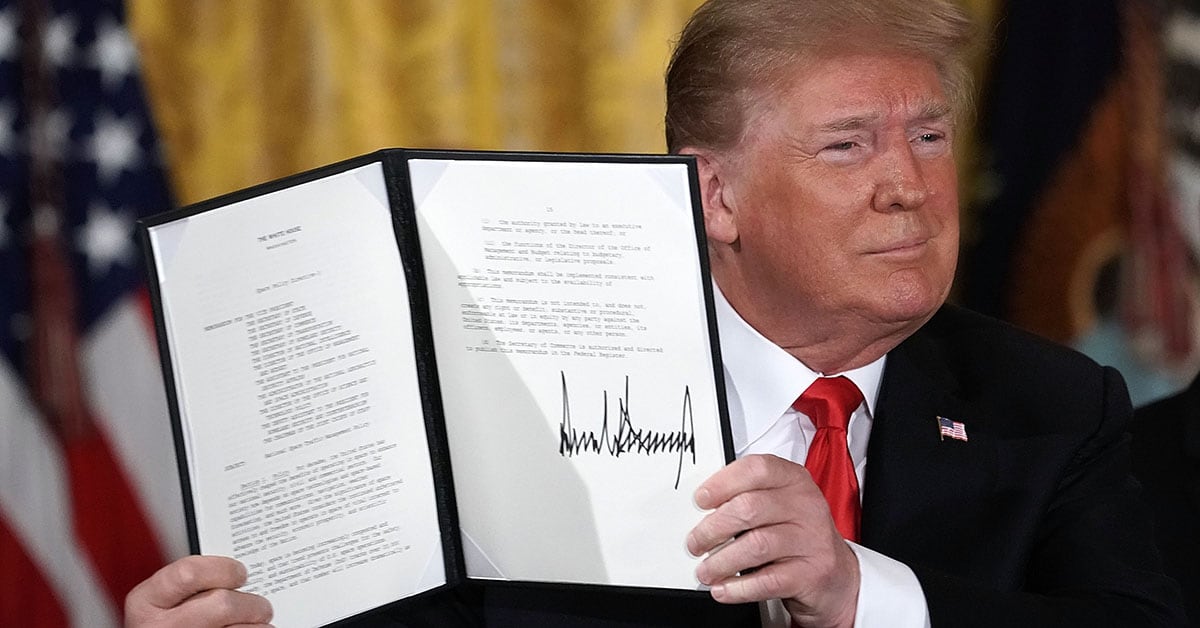WASHINGTON — After months of deliberating how to stand up a Space Force, a sixth branch of the military proposed by President Donald Trump, Pentagon leaders have decided to funnel the new organization under the Department of the Air Force, Defense News has learned.
“There is established a United States Space Force as an armed force within the Department of the Air Force,” states a draft of the legislative proposal due to be put forward alongside the fiscal year 2020 budget early next year, which was viewed by Defense News on Dec. 20.
The new service will be overseen by the newly created undersecretary of the Air Force for the Space Force and a Space Force chief of staff, who will sit on the Joint Chiefs.
RELATED
Will the Space Force sit under the Department of the Air Force? The Pentagon finally has an answer.
Although the version of the proposal seen by Defense News is still in draft form and thus subject to change, an administration official with knowledge of discussions said that there is alignment across the Defense Department on keeping the Space Force within the Department of the Air Force.
The document has been circulating among top Pentagon and service leaders, with the intent to hand it off to the Office of Management and Budget next, said one Defense Department official who was not authorized to speak on the record.
The decision is a major victory for the Air Force, which initially stood against attempts to carve out space operations from the service. Although Air Force Secretary Heather Wilson eventually declared her support for the president’s Space Force initiative, keeping the new branch within the Department of the Air Force will allow Air Force leaders to continue to have a voice on military space.
A spokesman for Deputy Secretary of Defense Patrick Shanahan, who is leading the department’s efforts to create a Space Force proposal, declined to confirm the details of the draft.
“In concert with White House guidance, we are moving forward with a legislative proposal for Space Force,” said Lt. Col. Joe Buccino in statement.
The proposed structure of the new service — which retains the moniker of Space Force that is favored by Trump — most closely mirrors the Space Corps proposal originally offered by Rep. Mike Rogers, the Alabama Republican who chairs the House Armed Services Committee’s strategic forces committee.
Rogers and others in the House had advocated for a Space Corps that would sit under the Department of the Air Force, similar to the Marine Corps’ existence as an independent service under the Department of the Navy. The measure was passed through the House as part of the 2018 defense policy bill, but failed to make it though the Senate.
RELATED

However, it was seemingly brought back to life stronger than ever when Trump directed the Pentagon to stand up a Space Force. Trump said this new, independent military branch would be “separate but equal” to the Air Force, leading defense wonks to speculate that a new Department of the Space Force would be created.
It appears that, after doing its analysis, the Pentagon favors a more modest approach — one that allows the Air Force to retain a degree of oversight over the Space Force initially, with the idea that it could establish a Department of the Space Force later if the need presented itself.
“The Space Force shall be organized, trained and equipped to provide for freedom of operations in, from and to the space domain for the United States and its allies” and “to provide independent military options for joint and national leadership and to enable the lethality and effectiveness of the joint force,” the legislative proposal states.
The service, which consists of an active duty component and Space Force Reserves, “includes both combat and combat support functions to enable prompt and sustained offensive and defensive space operations and joint operations in all domains.”
The undersecretary of the Air Force for the Space Force will be responsible for “the overall supervision” of the new service, but is still subordinate to the Air Force secretary, the legislative proposal states. On the uniformed side, a chief and vice chief of the Space Force would lead the “Space Staff.”
The proposal does not lay out the Space Force’s relationship to the newly re-established U.S. Space Command or the Space Development Agency, which the Pentagon intends to form to organize the rapid procurement of space technologies. Nor does it spell out the cost of standing up a new space service, a topic that has been hotly debated within the Pentagon and beyond.
In November, Defense One reported that the Defense Department was evaluating multiple ways of organizing the Space Force, including as a subordinate organization to the Air Force. This marked a change from its initial mandate to create a wholly independent department, one that Pentagon leaders saw as necessary to appeal to Congress, which gets the final decision on whether to establish a Space Force, the publication wrote.
Last week, Deputy Defense Secretary Patrick Shanahan told reporters that the Pentagon had finalized an answer to questions about the organization of a Space Force, and that Trump had been briefed on the proposal.
“There were two primary options,” he told reporters Dec. 13. “We’re now down to one option. I’m really not in a position to disclose what that one option is, but I can tell you that the legislative proposal itself probably tomorrow will start to go through the [Pentagon] for coordination.”
Vice President Mike Pence was briefed on the way forward during a visit to the Pentagon on Wednesday, reported Space News.
Valerie Insinna is Defense News' air warfare reporter. She previously worked the Navy/congressional beats for Defense Daily, which followed almost three years as a staff writer for National Defense Magazine. Prior to that, she worked as an editorial assistant for the Tokyo Shimbun’s Washington bureau.




